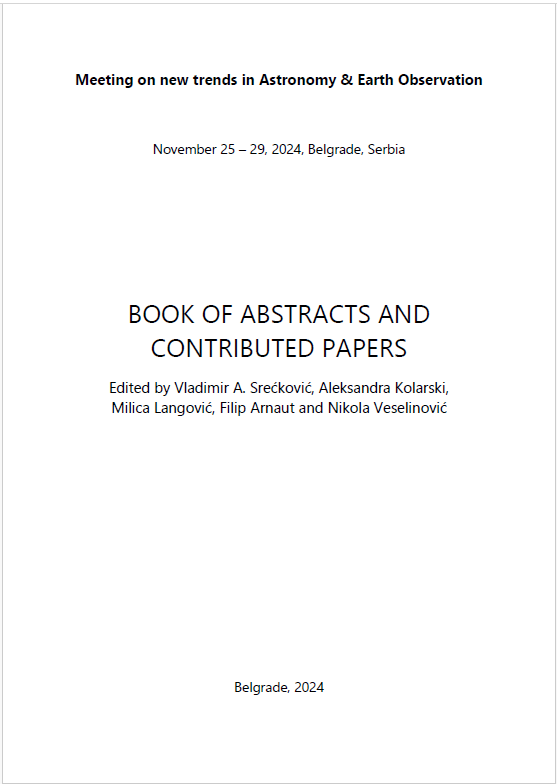FLUENCE OF ENERGETIC PROTONS AT L1 IN HELIOSPHERE BEFORE AND DURING SOME EXTREME SPACE WEATHER EVENTS IN HELIOSPHERE
Nikola B. Veselinović, Mihailo Savić, Darije Maričić, Filip Šterc, Dejan R. Joković, Radomir M. Banjanac, Aleksandar L. Dragić.
Publication
BOOK OF ABSTRACTS AND CONTRIBUTED PAPERS - International scientific conference: Meeting on new trends in Astronomy & Earth Observation, Page 40-41, https://doi.org/10.69646/aob241211
BOOK OF ABSTRACTS AND CONTRIBUTED PAPERS - International scientific conference: Meeting on new trends in Astronomy & Earth Observation, November 25-29, 2024, Belgrade, Serbia, Edited by Vladimir A. Srećković, Aleksandra Kolarski, Milica Langović, Filip Arnaut and Nikola Veselinović
Published by: Scientific Society Isaac Newton Belgrade
Published: 15. 12. 2024.
Abstract
Abstract: The study of transient phenomena caused by solar activity is of great importance (Savić et al. 2023), as these events can affect Earth's magnetosphere, environment, technological infrastructure, and systems (see Kataoka et al. 2018, Belov et al. 2022, Kolarski et al. 2023, and references therein). Extreme events originating from the Sun, in addition to inducing various processes in the heliosphere such as shock waves and particle acceleration (Waterfall et al. 2023), can increase the flux of charged particles within the heliosphere.In this work, the relationship between various solar activity indices and event-integrated fluence spectra of energetic protons measured at Lagrange Point L1 has been studied. The investigation focuses on the parametrization of differential fluence spectra using several proposed models to characterize the fluence spectra before and during extreme events. Three functions used to model the energetic proton fluence spectra appear to be comparatively useful in this type of analysis. This study demonstrates that SEP enhancement at L1 concurrent with the arrival of the CME shock is well-modeled by modified power-law functions. However, structures that do not coincide with the shock arrival (and often precede it) are poorly modeled, leading to the conclusion that these particles are apparently not related to the shock and possibly have a different origin. - FULL TEXT available in PDF.




